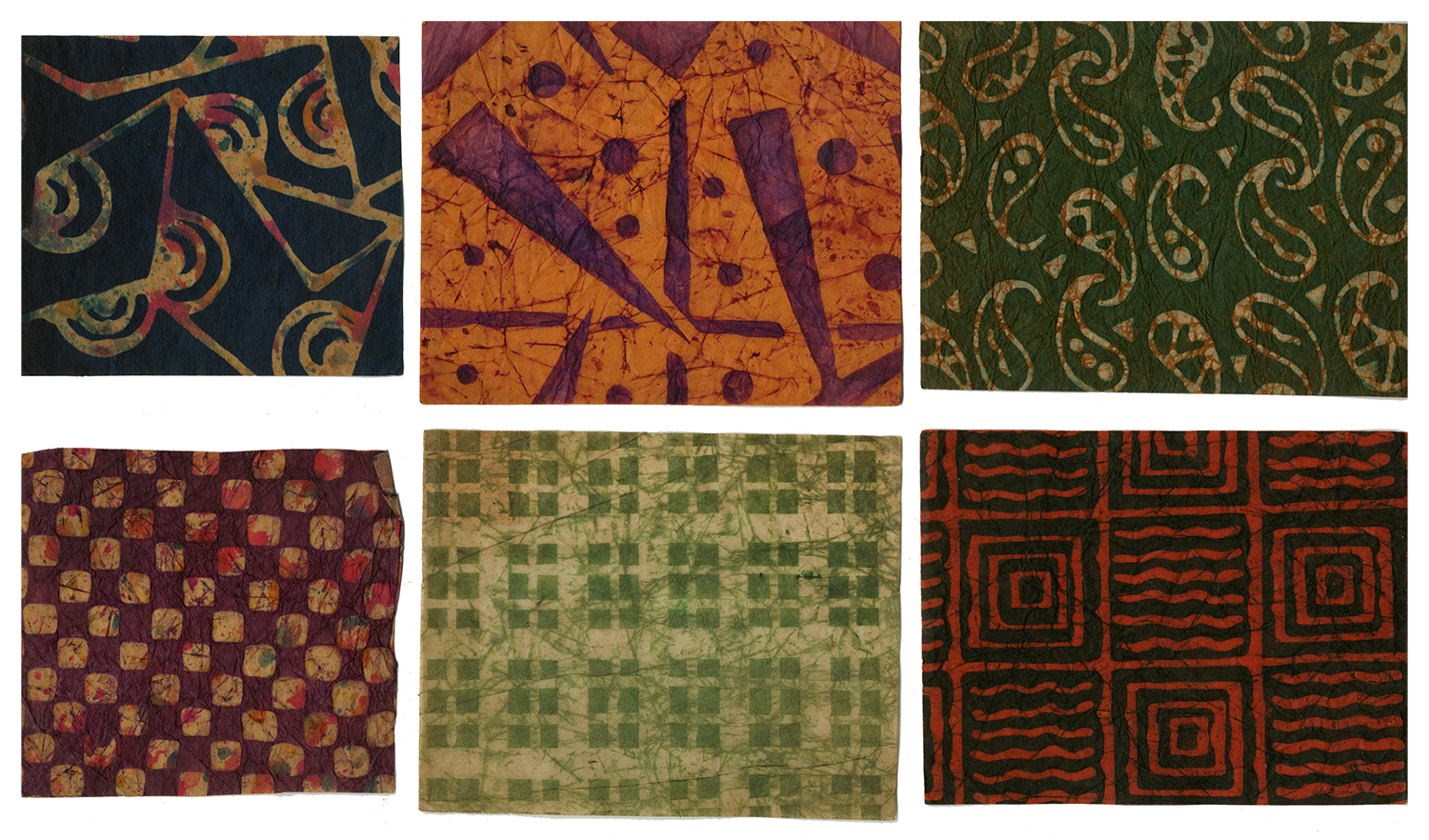Batik Paper
March 1, 2018
This month's feature is batik paper. These pieces are numbered in the Harrison Elliot Collection as #1988.4157; there are 197 pieces total, and we've shown 6 that represent the broad range of patterns in the set. Batik is a dyeing technique that uses wax to produce resistant areas where dye does not set, producing patterns with contrast between dyed and undyed or partially dyed areas. Traditionally, batik is used to dye fabric, but the same principles can be applied to paper as well. Fabric batik has held particular importance in Indonesia, and its spread into Europe led Germany to develop methods of mass production of batik in the mid-1900's.
The pieces featured here are from a sample set of batik paper from Germany that was under patent review - each sheet has a small label on the back with a patent reference number. The set is divided into groups of similar styles, such as the strong, colorful, geometric design from the first image; there are 10 pieces like it with slightly different colors and patterns. One of the distinctive features of batik is the staining that occurs on the surface that resembles veins. This results from cracking in the layers of wax, which allows some color to seep through to the surface. The papers used in this set range from cotton blends to imitation vellum, and instead of dip dyeing the paper, the dye would have been painted on like watercolors.
We hope that you enjoyed this peek at our collection! We'll be back next month with another artifact. Have a great March!
Category: Decorative Papers
Region of Origin: Asian
Keywords:
Harrison Elliot

